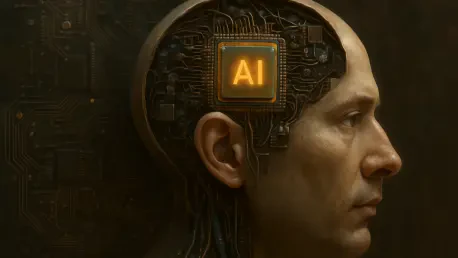The integration of artificial intelligence in education has seen revolutionary advancements over the past few years, promoting the idea that AI can transform learning environments significantly. However, the challenge lies in differentiating between tools that genuinely enhance learning experiences and those that merely capitalize on the “AI-powered” label. As educators and administrators are inundated with AI-driven technologies, the need for discernment in adopting these innovations becomes more crucial than ever. Many tools flaunt AI capabilities, yet it’s essential to evaluate their actual contributions to pedagogical practices and student outcomes, ensuring that investments translate into meaningful educational enhancements.
Differentiating Meaningful AI Tools
Understanding the True Value of AI Integration
In the current landscape of edtech, the term “AI-powered” frequently appears in product descriptions, yet its implementation often lacks depth and innovation. Many solutions integrate basic AI functions such as spell-checking or simple tagging systems, providing functionalities that have existed for years, thus offering limited advancements in educational strategies. The pervasive misuse of “AI-powered” as a buzzword has led educators to approach these tools with skepticism. The increasing pressure to incorporate effective technology while managing limited school budgets requires educators to examine proposed tools critically. Hence, understanding the true value of AI integration becomes imperative in ensuring that the chosen innovations meaningfully contribute to educational quality.
To discern AI tools’ genuine value, educators must focus on features that align with student-centered and pedagogically relevant outcomes. Evaluating whether these technologies support differentiated learning and teacher control in instructional settings is paramount. It’s also important to look beyond superficial functionalities and investigate whether tools offer capabilities such as adaptive learning pathways, predictive analytics for student progress, or personalized feedback mechanisms. These features can provide insights that truly enhance the teaching-learning dynamic, offering educators substantial resources to elevate educational experiences.
Tools Offering Genuine Enhancements
Certain AI tools have distinguished themselves by delivering substantial contributions to the educational sector. ClassDojo’s Sidekick stands out as an assistant specifically designed to alleviate educators’ clerical tasks, affording them more time for student interaction. This tool streamlines lesson planning and administrative duties, even assisting with crafting personalized report card comments. Such applications not only enhance classroom efficiency but also maintain the critical personal connection between educators and their students, illustrating the genuine improvement AI can bring to education.
Brisk is another remarkable tool, offering seamless integration with educational systems like Google Docs and PDFs. It helps educators develop curriculum and provide tailored feedback through over 30 built-in applications designed to streamline teaching processes. By facilitating important aspects such as student writing progress tracking and curriculum resource generation, Brisk presents a safer, more intuitive AI environment that benefits both students and educators. These tools exemplify the true power of AI when it is thoughtfully implemented to address real challenges in education.
Challenges in AI Implementation
Navigating the Nuances of AI Deployment
Despite the promising potential of AI in educational settings, hurdles remain in its effective deployment. One significant challenge lies in the varied development levels of these tools, which leads to inconsistent educational outcomes. A comprehensive understanding of each tool’s functionality and its alignment with specific pedagogical goals is essential. Educators must be equipped with the right questions to evaluate AI tools critically, ensuring that the selected technology not only keeps up with technological trends but also genuinely supports educational goals. Attention to detail in implementation strategy is critical to maximize AI’s impact while minimizing potential disruptions in the learning environment.
The varying levels of AI tool maturity often result in diverse experiences for educators and students alike. For AI to positively impact educational practices, tools must possess robust development frameworks, be adaptable to different educational settings, and integrate seamlessly with existing systems. However, insufficient training and inadequate infrastructure often impede AI’s successful adoption. Stakeholders need to consider these factors to ensure that the introduction of AI is smooth and aligns with educational objectives. Only through careful planning and preparedness can AI tools be fully leveraged to enrich the educational landscape.
Ensuring Responsible AI Usage
The responsible usage of AI tools extends beyond functionality; it involves careful consideration of ethical implications, particularly concerning students’ data privacy. With AI-driven systems continually collecting data to improve educational processes, institutions must adopt rigorous data protection measures to safeguard students’ digital identities. Limiting data collection and ensuring transparency about data usage not only protects students but also builds trust in AI applications. A commitment to privacy and ethical usage is indispensable for educators in maintaining a secure and supportive learning environment.
Security concerns regarding student data underscore the necessity for minimal data collection strategies. Institutions must collaborate with AI providers to establish clear guidelines on data utilization, focusing on anonymization and data encryption to prevent unauthorized access. Implementing these measures is crucial in fostering a responsible AI ecosystem within schools. Educators must remain vigilant and proactive, ensuring students’ digital presence is preserved and protected while harnessing AI’s capabilities to advance educational objectives.
The Path Forward in AI-Driven Education
The integration of artificial intelligence in education has seen revolutionary advancements over the past few years, promoting the idea that AI can transform learning environments significantly. Yet, the challenge is distinguishing between tools that genuinely enhance education and those that merely ride the wave of the “AI-powered” trend. Educators and administrators are bombarded with AI-driven technologies, underscoring the urgent need for careful assessment when adopting these innovations. Many educational tools boast AI capabilities, but it’s crucial to scrutinize their real contributions to teaching methods and student outcomes. With schools and institutions making significant investments, it’s important that these resources lead to meaningful improvements in education rather than just adopting AI for its own sake. By doing so, educators can ensure that the integration of AI leads to tangible classroom enhancements and genuine learning development, rather than simply adding complexity without real educational benefits.









